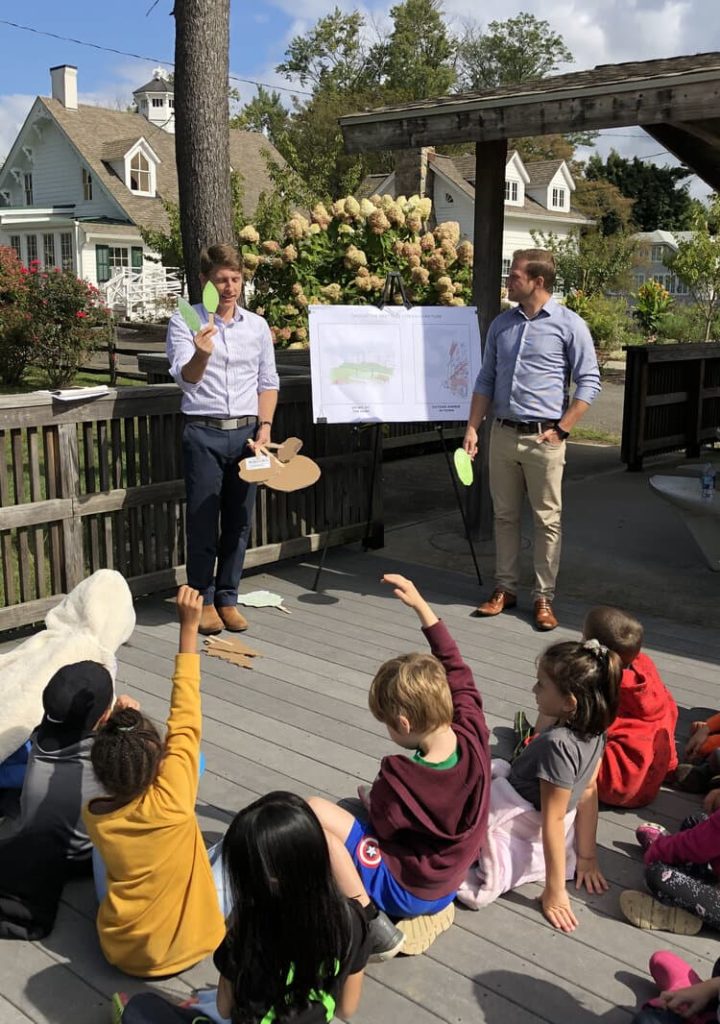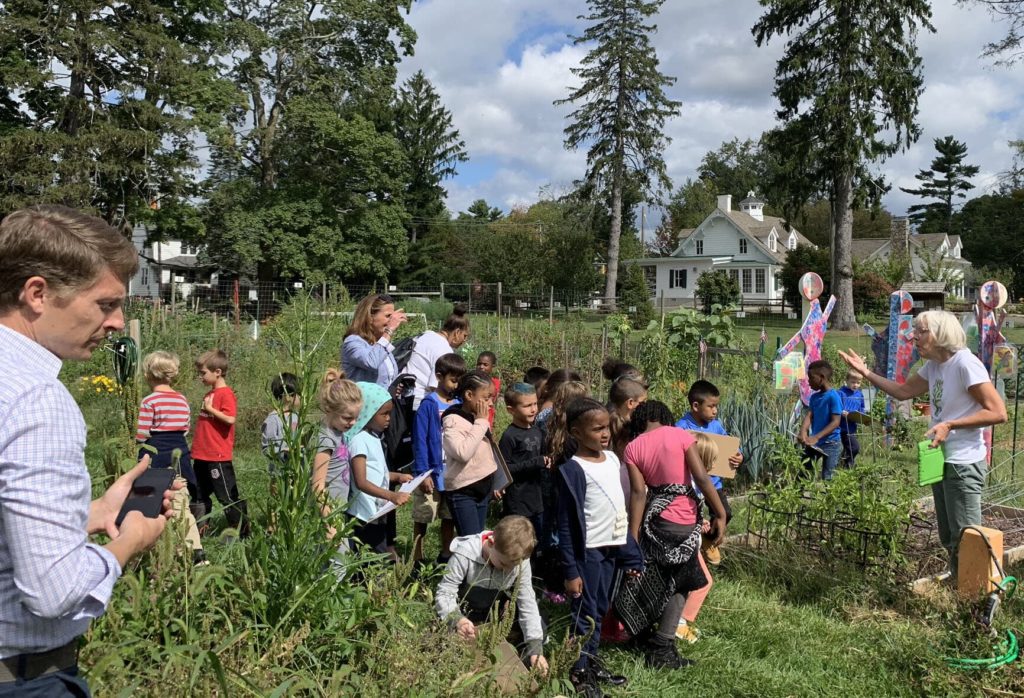Education plays an important role in our industry of architecture, interior design and landscape architecture.
As designers, we are constantly learning of new materials, evolving green technologies and more efficient construction methods to help push our designs to the forefront of innovation. While this education for ourselves is immensely important, it is also our part to take a step back and help educate the next generation.
At GA, we partner with non-profit organizations to achieve the physical environments they require to help communities in their own unique ways. Recently, our landscape architects Allan Broadbent and Jeff Scherr (see above image provided by GA) had a wonderful opportunity to help the Norwalk Tree Alliance design an outdoor, interactive educational space at Fodor Farm. These outdoor classrooms will be used to educate the surrounding elementary schools through a program called ‘The Tree School’.

The school is in its second year and has cultivated a three-part education module, which has been adopted as part of the approved science curriculum in Norwalk, where students visit the farm in fall, winter and spring. The Tree School acts as a means for hands on learning and reinforcement to subjects that students are covering inside the classrooms at their elementary schools.



The landscape architects visited the site in the winter to survey the area, assess potential locations for classrooms and propose a schematic design. The initial design evolved from the idea of using the existing slope to limit site disturbance and help form a stepped amphitheater-like space with comfortable seating for the students. A circular layout fosters a sense of comfort and containment while focusing attention on one central point, in this case the teacher. Using that focal point as the entry and exit helps the teacher maintain control of the classroom and ensure the safety of the students.


Since the initial design concept, our landscape architects were able to run an education module about trees in the landscape and how a landscape architect chooses the right tree type for certain applications. They presented the module five times to five different classes from local elementary schools.


The children learned about evergreen and deciduous trees, flowering and shade trees, and small and large trees. The children were then invited to take on the role of junior landscape designer and helped our team design a picnic spot in a park as well as an outdoor cafe streetscape.
junior landscape designers
Each junior landscape designer came up and used what they learned from our landscape architects to pick a tree and describe why they felt it was the best choice. They provided informed solutions in their reasoning such as to provide shading, improve air quality, to match the flower color to the building, to protect the pedestrians from traffic as they enjoyed lunch at the cafe, to provide homes for wildlife and so much more!
It is imperative to advocate and educate children about the environment so they can grow interest and understanding as to how nature functions. Experiencing concepts they are learning in school first hand in a physical environment helps reinforce student education. Teachers can then help solidify these findings with follow-up activities to reflect on what they learned. By designing educational spaces that consider function as well as subject matter, designers are able to positively affect how we translate our own knowledge about the physical environments we construct to the next generation.




